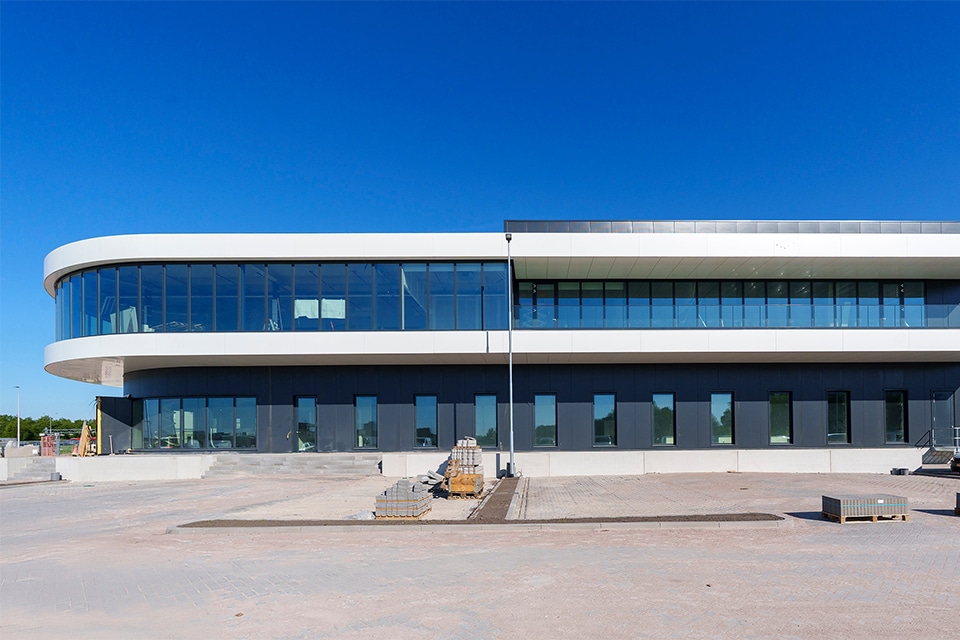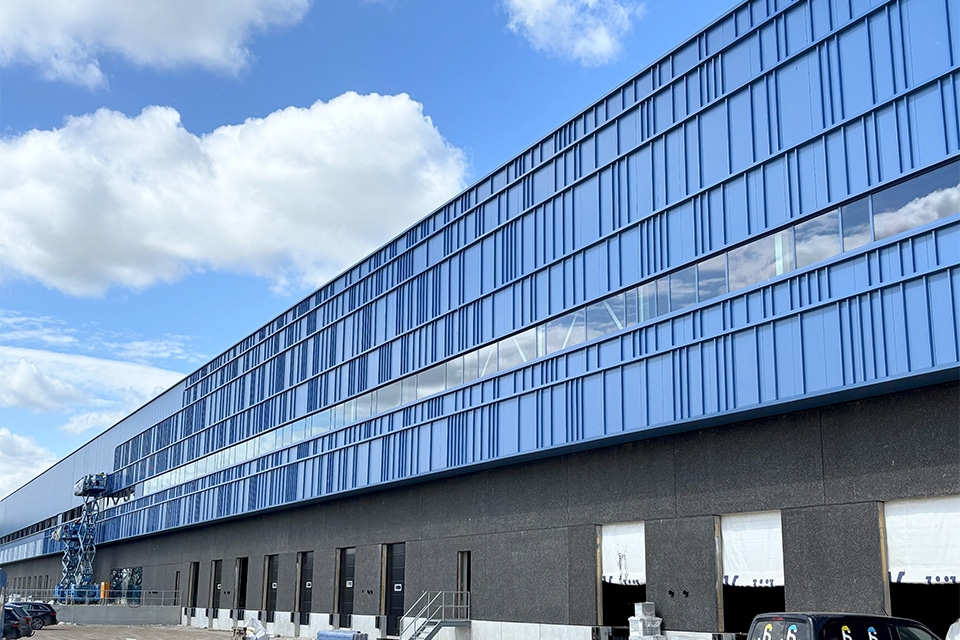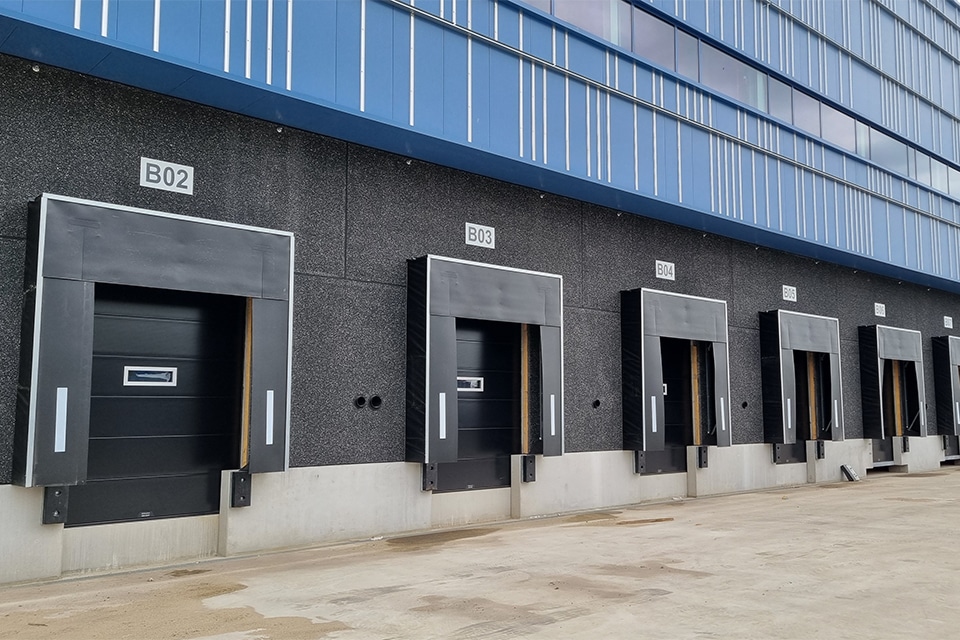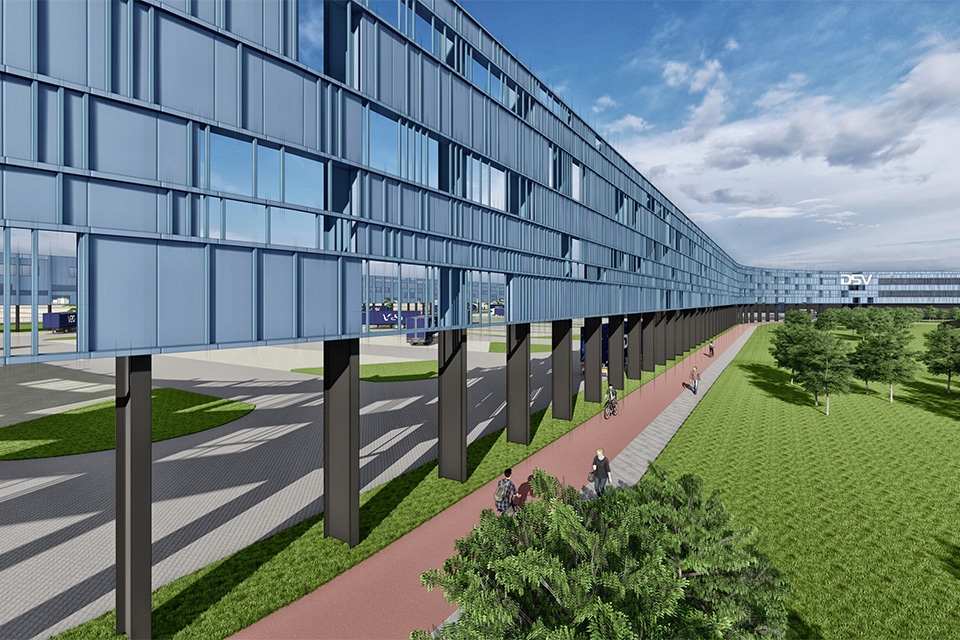
Concrete floor with hybrid reinforcement
Super flat, smooth and jointless
The concrete floors in dc Convent are engineered, produced and poured by De Jong Betonvloeren from Rijssen. It is realizing a total of 20,000 m² of hybrid floor, the first 10,000 m² of which have already been delivered.
The preparations for the enormous concrete floors were carried out by De Jong Betonvloeren together with steel fiber supplier Bekaert. "The data from the rack builder was our starting point," says Rohald de Jong, director of De Jong Betonvloeren. "For example, we knew the load of the racking and that of the forklifts. We determined the bearing capacity of the subgrade with pressure tests. The combination of these data led to the recommendation of a hybrid floor."

De Jong Betonvloeren used the Manipav, which it used to drive over the reinforcement and level out the concrete in strokes 3 m wide.
Dilation-free
The term "hybrid" here refers to a steel fiber floor combined with traditional reinforcement. In these floors, often only a top mesh is used, supplemented by a dose of high-performance steel fibers (type Dramix® 4D 65/60BG). Bekaert specially developed the Dramix® 4D steel wire fibers with improved anchoring and higher tensile strength of the wire. Combined with a reinforcement mesh, it creates a floor with optimal crack control (0.1-0.3 mm) and high impact resistance. The hybrid floor is free of dilatations and can be applied both on the ground and on piles. This makes the floor ideal for application in distribution centers with intensive forklift traffic.
A long development period
A long development process preceded the hybrid floor. "Steel-fiber floors have been used for more than 40 years," De Jong explains. "The first ones have saw cuts to absorb shrinkage stresses. However, these saw cuts also have disadvantages. They require maintenance, are inconvenient for forklifts and cause crumbling and saucer formation. This prompted us to keep looking for a floor with fewer disadvantages."

After flatting, the floor was ready for use.
Smooth and free of joints
An important step in this quest is increasing the quantity and quality of the steel fibers. De Jong: "This allows the floor to absorb more shrinkage stresses and we can make surfaces of 50 x 50 m, replacing the saw cuts with expansion profiles. It's a big step forward, but it's still not ideal. Those profiles also require maintenance, and forklifts are still bothered by them. These factors combined ultimately led to the super-flat, smooth hybrid floor."
Super flat
The super-flat surface of the hybrid floor is essential for distribution centers and thus also for dc Convent. "If the floor is flat, dc owners hardly need to adjust the racking. That saves them a lot of work. At dc Convent, the floor had to comply with the NEN 2747 class 3 standard." For this, De Jong Betonvloeren used the Manipav, with which it drove over the reinforcement and flattened the concrete in strokes of 3 m width. After levelling, the floor was ready for use.
Besides the high quality requirements, De Jong Betonvloeren had to deal with large surface areas. It was the first time it had supplied the hybrid floor for two 10,000-square-meter units. "To make this manageable, we divided the work into six phases of about 1,600 m². In between, we made preparations for the next shift. The last shift of phase I is now complete; phase II starts in March 2020."




